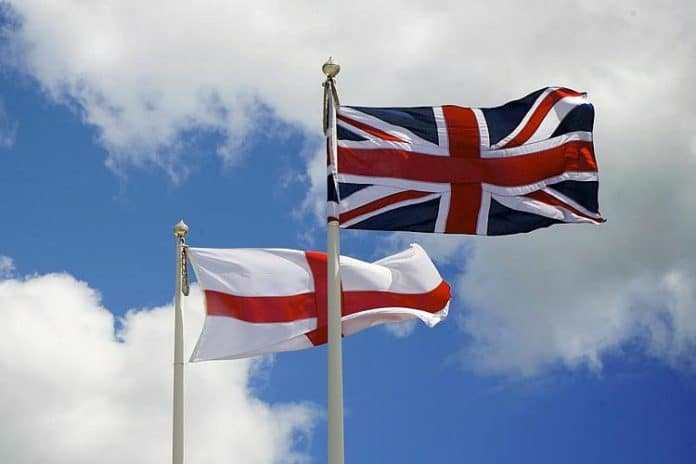
★ The Sports Examiner: Chronicling the key competitive, economic and political forces shaping elite sport and the Olympic Movement.★
★ Thank you to now 14 donors, who have covered 37% of our technical expenses for the first half of 2023. Please consider a donation. Thank you in advance. ★
★ To get The Sports Examiner by e-mail: sign up here! ★
● Sponsored post: All about the RR Auction on now: An Athens 1896 medal in its original box, 38 Olympic torches and 40 Olympic medals, ending 19 January ●
One of the announced legacy goals of the London 2012 Olympic Games was to get more people involved in physical activity. That concept has become a popular rallying cry for other sports mega-events, but new disclosures in a report from the British Parliament underscore the realities of trying to get people to exercise.
A 19 December 2022 report titled Grassroots participation in sport and physical activity from the British House of Commons Committee of Public Accounts included this unhappy summary of the most recent efforts:
“The London 2012 Olympic and Paralympic Games in London were a success in many ways. But ten years on, the Department for Digital, Culture, Media and Sport has fallen short of the increase in grassroots sports and physical activity participation promised as part of the long-term legacy of the Games.
“The Department recognises that it relied too heavily on a national event to deliver increased participation and since 2015 has focused on local based approaches and encouraging the least active to become more active. While this shows some signs of working, disappointingly it has not translated into meaningful national level change.
“Despite Sport England spending an average of £323 million of taxpayers money each year since 2015 to increase participation in sport and physical activity and to support the sports sector, the percentage of active adults increased by only 1.2 percentage points between November 2016 and November 2019. Nearly two in five adults in England still do not meet the Chief Medical Officer’s guidelines for recommended activity.”
In fact, due in part to the pandemic, adult physical activity participation has regressed since the 2012 Games.
The Sport England agency, formed in 1996, measured adult physical activity in England from 2006-2016 according to a survey which measured participation in sport at least once per week. The percentage rose from 34.6% in 2006 to a high of 36.9% in 2012 – the year of the Games – and then declined to 36.1% by October of 2016.
A new measurement was introduced a month later – in November of 2016 – asking what percentage of the adult population in England was “active” for 150 minutes or more per week, regardless of the number of days. This yielded a higher number, with 62.1% in 2016, rising slightly to 63.3% – +1.2% – by November of 2019. Then came Covid-19 and the rate decreased somewhat, to 61.4% in 2020 and 2021.
Against these middling results was ₤1.938 billion in spending (~$2.34 billion U.S.) from the 2015-16 to 2020-21 fiscal years, an average of ₤323 million a year (~$390.35 million U.S.). The report further noted, with considerable worry:
“[T]he Department and Sport England have made little progress in tackling inequalities and barriers to people participating in sport and physical activity and Sport England’s spending data is not sufficiently granular to assess how well it targets spending at the least active. For example, it distributed £1.5 billion in grants in the five years starting 2016–17, but only knows which local authorities this funding went to for £450 million of this spending.”
Among those who were active, walking for exercise continued to grow, while the pandemic wiped out almost everything else. Comparing participation in November 2016 to November 2021:
● Walking: Up from 18.3 million (2016) to 24.0 million (2021)
● Active Travel: Down from 15.9 million to 11.9 million
● Fitness Activities: Down from 13.2 million to 11.4 million
● Running: Down from 6.9 million to 6.2 million
● Cycling: Up from 6.4 million to 6.5 million
● Swimming: Down from 4.9 million to 2.0 million
● Team Sports: Down from 3.5 million to 2.2 million
What did Sport England do, exactly, to get people to exercise? According to the report:
“The strategy promised to target funding at less active groups of the population, believing this would deliver the biggest gains for public spending. Sport England told us that, since 2015, it had adopted a variety of approaches to increase activity levels, from national media campaigns to working with local partners in 12 different UK cities as part of a pilot program to understand and address the barriers to getting people active.
“It explained that there had been some positive signs from this work and that insight from the pilots is helping it to make decisions at a national level. Its evaluation of the community pilots showed that, prior to the COVID-19 pandemic, inactivity reduced at a faster rate in local delivery pilot areas than in areas without the pilots.
“However, Sport England conceded it had found it hard to translate successes at local level and with specific groups into gains nationally. It explained that it expected that this will take time, particularly if tackling some of the most stubborn inequalities in society.”
And the proposed programs going forward did not inspire confidence:
“We asked Sport England how it can spark activity among the least active. It told us the answer was a combination of three key characteristics: motivation, confidence and opportunity. It noted that in the past government had over-relied on opportunity side, with a focus on building facilities and opening up clubs, assuming that people will then take up that provision.
“Sport England told us its new 2021 strategy had started to look at how to build people’s confidence and motivation to participate in sport by showing the public the benefits of being active and that ‘people like them’ can take part. Sport England said it intended to work within local communities to ensure initiatives were delivered through providers that were recognised and trusted in that community, because not everyone trusted a top-down programme from central government.
“However, when pressed, Sport England struggled to provide a tangible example of putting its motivation theory into practice.”
In polite language, the House of Commons report said that the efforts of the Department for Digital, Culture, Media and Sport, and Sport England have been a failure.
That’s not entirely surprising, since the goal – highly worthwhile – of getting people to be more fit is extraordinarily difficult to achieve today, against the backdrop of games, notifications and messages on one’s mobile phone, tablet and/or computer, and more (sedentary) entertainment options than in all of human history.
In Britain, the new report has created plenty of critical headlines:
● BBC: ‘Little progress’ in tackling barriers to participation in sport – MPs
● SkySports: Government accused of wasting sports participation money after London 2012 Olympics: ‘Precious little to show’
● The Guardian: Government has broken pledge to get UK fitter after 2012 Olympics, says report
Let’s start by noting this is about the British government’s post-Games efforts to get people active, and has nothing to do with the long-disbanded 2012 Olympic organizing committee. And the government has not been able to leverage the Games into any lasting change in the public’s attitude towards physical activity – let alone physical fitness – since.
And the report states, quite clearly:
“Sport England acknowledges it relied too heavily on a national event to deliver increased participation and that elite sports success doesn’t necessarily inspire activity at a grassroots level.”
For those looking to use future increased public interest in fitness as a reason for bringing an Olympic Games or something similar to a community, the new Parliamentary report leaves no doubt that any suggestion that a major event will get people to exercise should be met with skepticism. Or just outright rejection.
Rich Perelman
Editor
You can receive our exclusive TSX Report by e-mail by clicking here. You can also refer a friend by clicking here, and can donate here to keep this site going.
For our updated, 929-event International Sports Calendar for 2023 and beyond, by date and by sport, click here!
















